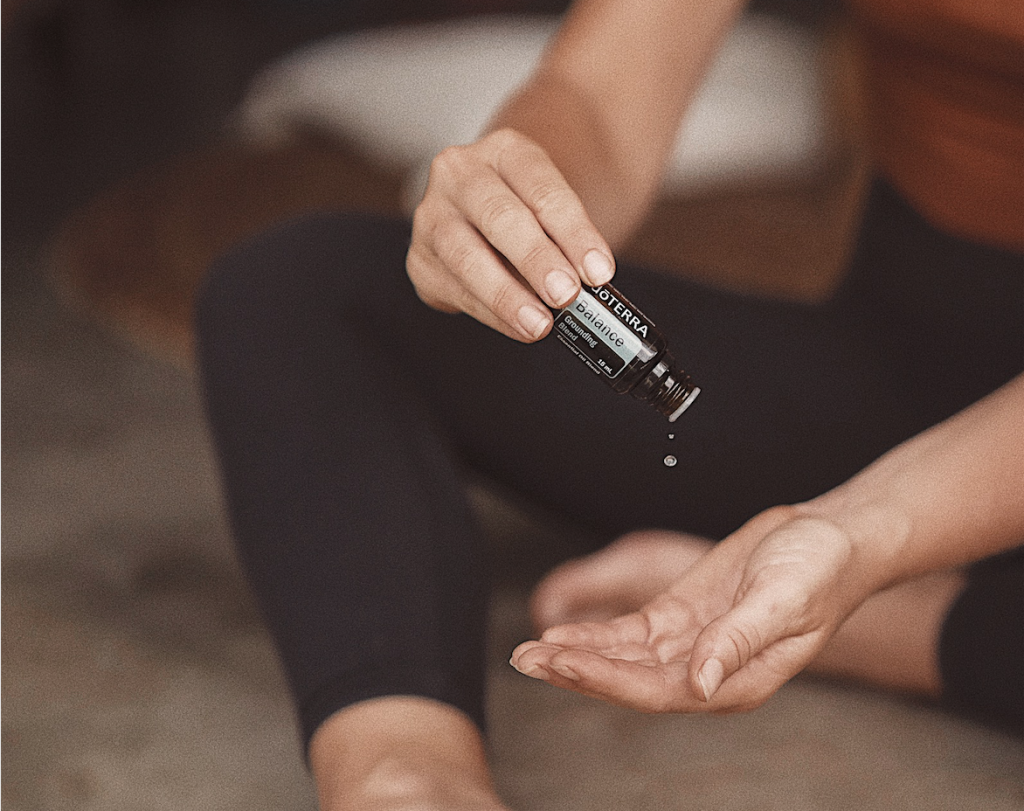Topical use of essential oils is a wonderful way to experience their innumerable benefits. When using oils or blends on the skin, it’s important to follow certain guidelines for optimal results and safety. Here are my best tips for topical use.
Dilution
doTERRA oils and blends are classified into three categories: Neat, Dilute, or Sensitive.
- Neat means that no dilution is necessary and the oil can be applied as-is, directly to the skin. These oils are considered mild and generally do not induce skin sensitivity. Examples of neat essential oils are Frankincense, Lavender, Tea Tree, Melissa, and Sandalwood.
- Dilute means that an oil should always be diluted with a carrier (dilution) oil such as Fractionated Coconut Oil, no matter who is using it. Oils that fall into this category are those with a high proportion of constituents that are especially potent, such a phenols. Examples of essential oils that require dilution are Cassia, Cinnamon, Clove, Oregano, and Thyme.
- Sensitive means it should be diluted for people with higher sensitivity, including young or sensitive skin. Examples of sensitive oils are peppermint, ginger, eucalyptus, wintergreen, and black pepper.
Remember that diluting an oil does not make it less effective. When in doubt, even the neat oils can be diluted to your comfort level. If you’re using an oil for the first time, it’s a good idea to dilute it.
Application
In general, apply essential oils where you need them for their localized effect. For example, to soothe your body after exercise, you would apply your chosen essential oil to the muscles in your back or legs.
The potency of oils means that you should not use them in sensitive areas of the body. But there are many places they can be used safely:
- Face (for helping with complexion)
- Wrists, palms, or behind your ears (to experience oils aromatically)
- Forehead, neck, and temples (for dealing with feelings of tension)
- Base of the skull (for emotional and mood support)
- Abdomen (over major digestive and reproductive organs)
- Chest (for feelings of clear breathing)
- The soles of the feet (to limit sensitivity, soothe the feet, or for massage)
Special caution should also be taken with any of the oils that are considered “hot.” These include all the oils in the Dilute category mentioned above. Always dilute these oils and be aware of other ways to use them other than on the skin.
Reactions
Having a reaction to an oil is rare, but it can happen. You will know if you are having a reaction based on responses in the skin, like irritation or increased tenderness. When trying a new oil, you can perform a patch test by applying one drop of oil (with five to ten drops of carrier oil for dilute or sensitive oils) to a patch of skin on your forearm. Observe that area of skin for one hour for any reaction, though you are most likely to react within 10 minutes. Keep Fractionated Coconut Oil on hand and apply to reduce the effects should a sensitivity occur.
Sun Safety
The citrus oils (including Bergamot, Grapefruit, Lemon, Lime, Tangerine, and Wild Orange) are photosensitive oils, or oils that make your skin more sensitive to UV radiation and sunburn when exposed directly to sunlight/UV rays. For up to 12 hours after applying these oils, avoid any exposure to direct sunlight or artificial UV rays. Instead, opt to diffuse the citrus oils, use them internally, or use them on skin that will not be exposed to UV light. Green Mandarin IS an exception, as a citrus oil that can be used topically in the sun.
Get Creative!
Topical use of essential oils brings unlimited opportunities to combine oils and create unique blends. Don’t be afraid to explore the properties and aromas of your essential oils and create new blends. And of course, please reach out to me if you have any questions at all or need advice on topical use, creating blends, or any other aspect of essential oil use!





